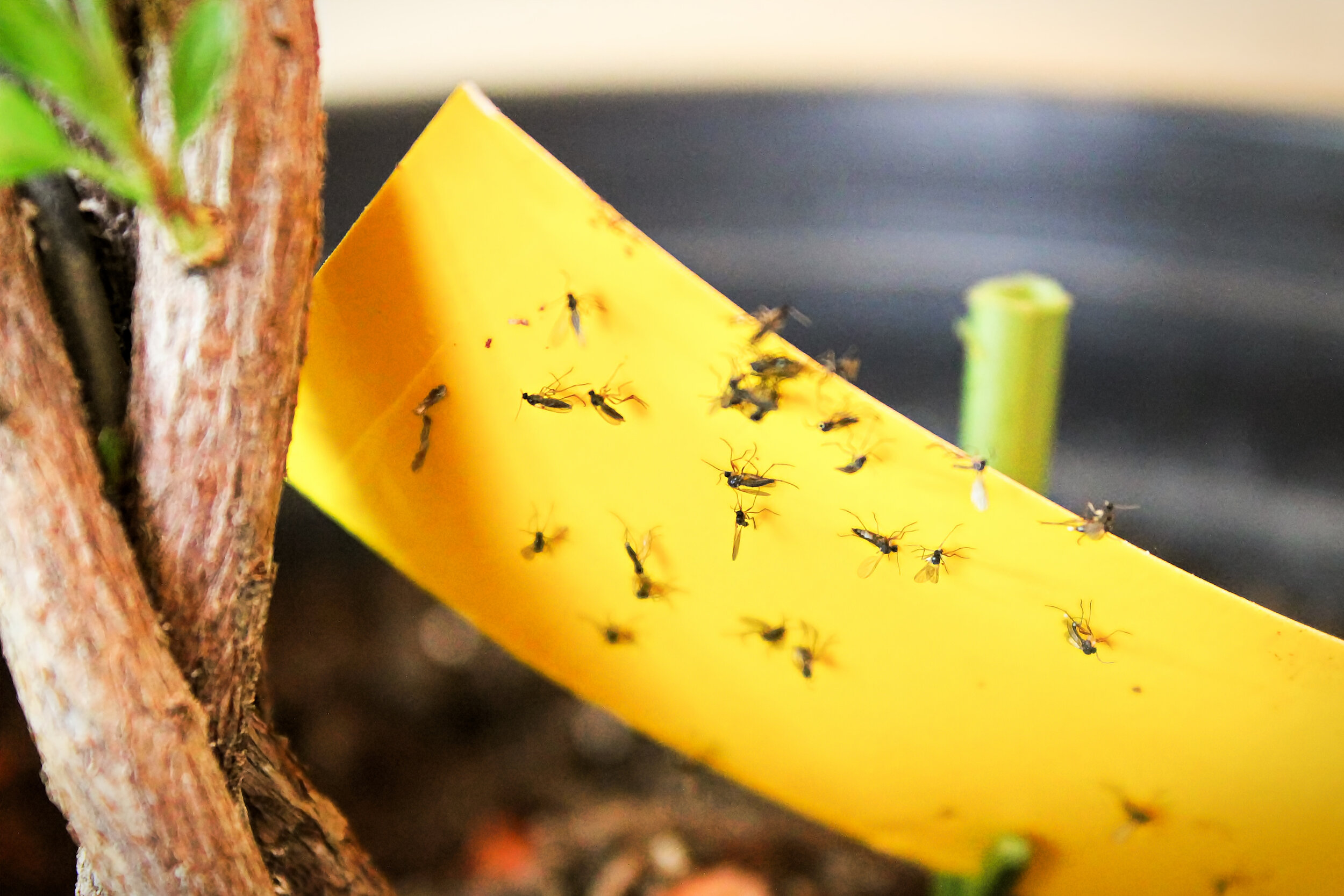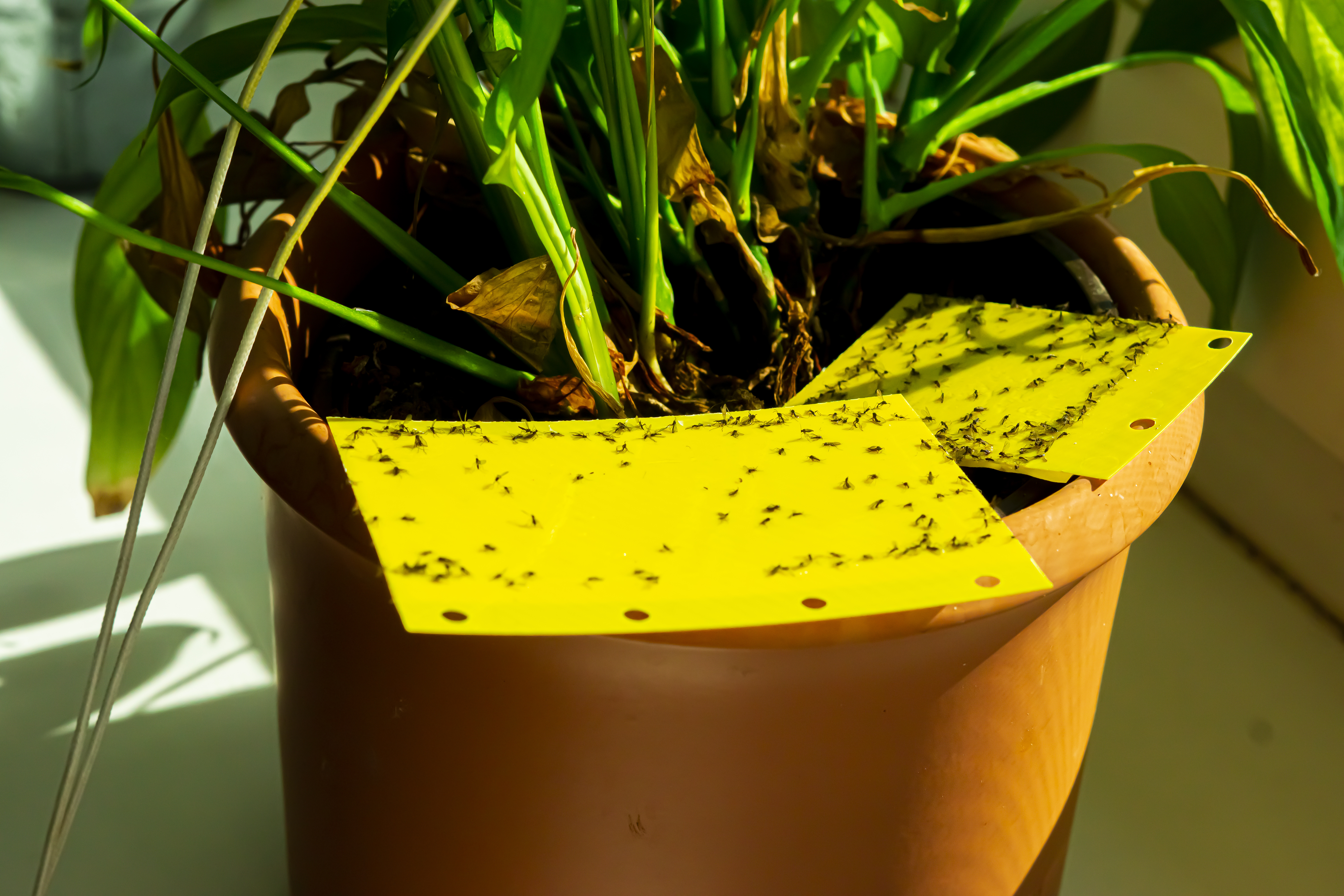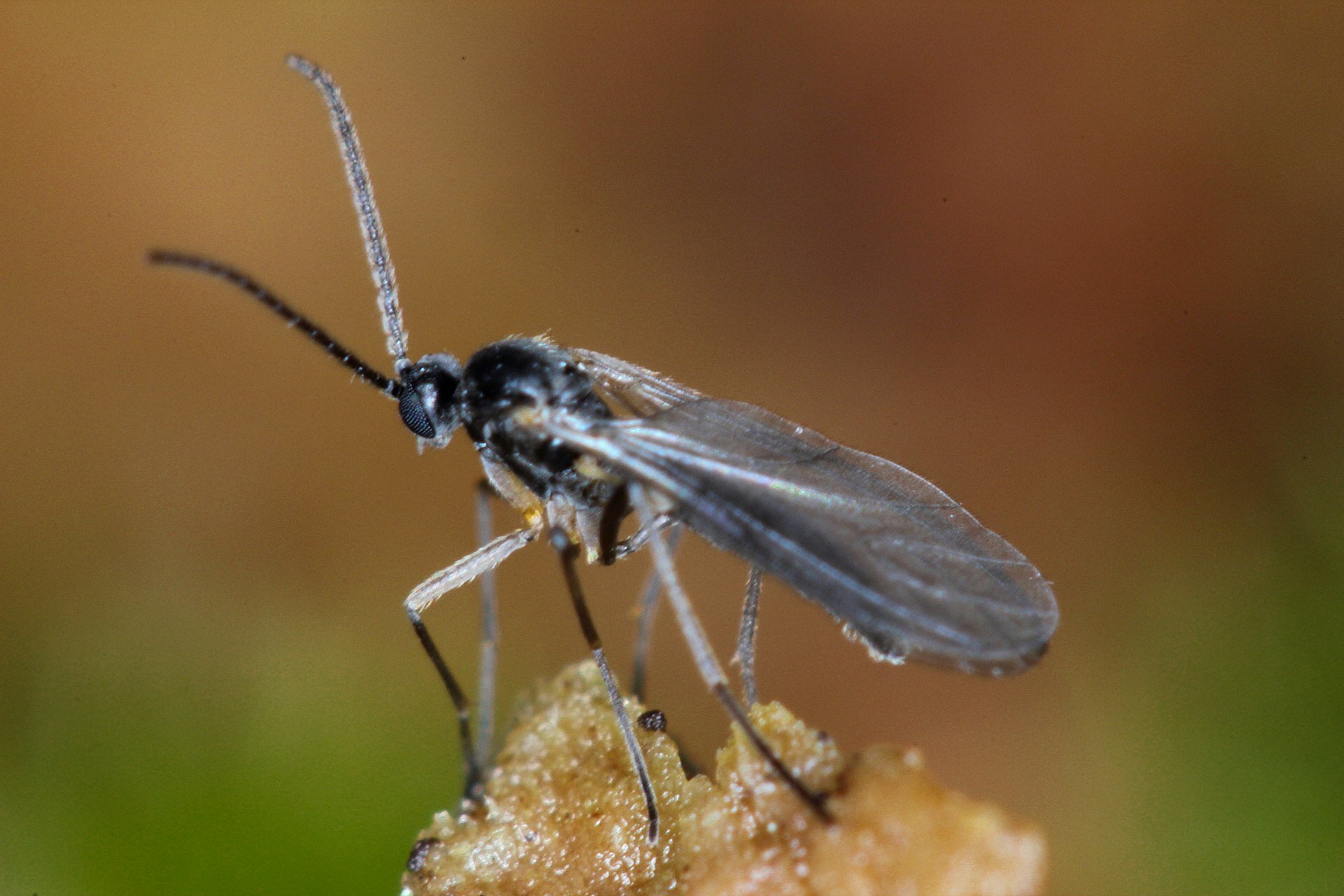What are fungus gnats?
Fungus gnats are rather aptly named little bugs. They feed on fungi and decaying plant material in the soil but can become a pest when humidity and moisture levels are high. Fungus gnats actually don't do much harm to your plants on their own. They can, however, be very annoying to deal with flying around your home.
Symptoms
Wilting or Yellowing Leaves : Young plants may show wilting or yellowing leaves due to root damage caused by gnats.
Visible Gnats : Small, dark flying insects around the soil surface and near the plant.
Larvae in the Soil : Tiny, translucent larvae visible in the top layer of the soil, often seen when the soil is disturbed.

What to do now
Make sure the soil dries out between waterings
Use yellow sticky traps. They will provide a way to see just how large the infestation is and will help catch the adults before they can lay more eggs. These fly traps are readily available.
Consider using biological control such as nematodes, predatory mites or the popular Bacillus thuringiensis
Hypoaspis miles, also known as Stratiolaelaps scimitus, are a type of predatory mite that live in the soil around the plant stem. They'll happily feed on fungus gnat eggs and larvae as well as thrip pupae.

Common questions
What do they look like?
These insects are about the same size as a fruit fly, although they are darker and more slender when you take a close look.
What do they eat?
Their main food is fungi, leaf mold and organic material in the soil, so maintaining your plant’s general health will help to reduce the risk of drowning in fungus gnats.
Do they bite humans?
Luckily, fungus gnats don’t really do any damage to humans, so you don’t have to worry about them biting you.
How long do they live?
A generation of fungus gnats can be produced within about 17 days, although in warmer temperatures this can be accelerated. Adults only live for around a week, but can produce up to 300 eggs which have a relatively short gestation period (around 4 days), meaning that multiple generations can exist in the same pot. Therefore, if applying an insecticide, it may be necessary to use multiple applications to ensure that all eggs are eliminated.
Can they fly?
Fungus gnats can certainly fly, however, they are quite weak fliers so are more likely to be found close to their host plant or near a window.
Are my plants at risk?
If your plants frequently stand in damp, poorly-drained soil, then they may be more prone to attracting fungus gnats. Ensure that your pots have drainage holes and that you use a potting mix containing a higher proportion of perlite/ sand if you feel that it is not draining well. Also check your plants for decaying organic debris. By making your plant’s conditions less hospitable for fungus gnats, you should be able to deter them from taking hold in the first place.
What is Bacillus thuringiensis israelensis
BTI ( Bacillus thuringiensis israelensis ) is a type of bacteria that works well as an insecticide. It is harmless to other types of insects. It's best applied as a soil drench to target the larvae andbreak the fungus gnat life-cycle
Can I prevent this in the future?
If you've got more than a few plants, some fungus gnats are inevitable. Just keep an eye on your collection so you can treat the issue before they get out of hand. Keeping some sticky fly traps close to your plants will catch some of the adults flying around and keep numbers under control. If they begin to increase in number, that's a sign that you might need to take action.
